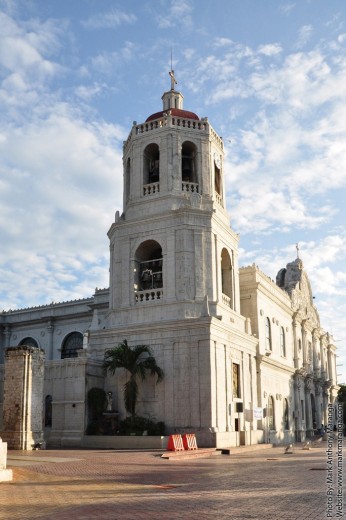Religion and Culture
The Filipino is essentially of Malay descent with a sprinkling of Chinese, American, Spanish, and Arab blood. As of May 2000, the Philippines has a population of 76.5 million, and it’s tough to differentiate correctly the lines between ancestry. A prolonged history of Western colonial rule, interspersed together with the visits of merchants and dealers have evolved a people of a unique mix of east and west both in appearance and culture.
The Filipino character is in fact just a little bit of all of the cultures put together. The bayanihan or spirit of kinship and camaraderie that Filipinos are well-known for is mentioned to be coming from Malay forefathers. The closely household relations are mentioned to have been inherited from the Chinese. The piousness descends from the Spaniards who created Christianity in the 16th century. Cordial reception is really a frequent denominator in the Filipino quality and this is what distinguishes the Filipino. Filipinos are probably one of the few, if not the only, English-proficient Oriental individuals nowadays. Filipino is the official national language, with English regarded as the country’s unofficial one.
The Filipinos are divided geographically and culturally into regions, and each regional grouping is recognizable by distinct traits and accents – the tough and frugal llocanos in the north, the industrious Tagalogs in the central plains, the carefree Visayans from the central islands, as well as the colorful tribesmen and religious Muslims of Mindanao. Tribal communities can be found scattered across the land. The Philippines has a lot more than 111 dialects spoken, outstanding to the subdivisions of these fundamental regional and cultural groups.
The nation is marked by a genuine mix of cultures; truly in the Philippines, east meets west. The background of the people is Indonesian and Malay. You’ll find Chinese and Spanish components as well. The historical past of American rule and meeting with merchants and traders climaxed in a distinctive blend of East and West, both within the appearance and culture of the Filipinos, or individuals of the Philippines.
Hospitality, an attribute displayed by each and every Filipino, makes these folks fabled in Southeast Asia. Rarely can you find such welcoming folks who take pleasure in the company of their Western guests. Maybe as a result of their long association with Spain, Filipinos are worked up and passionate about life in a way that appears a lot more Latin than Asian.
The Spaniards brought in Christianity (the Roman Catholic faith) and succeeded in converting the overwhelming majority of Filipinos. At least 83% of the total population belongs to the Roman Catholic faith.
The American occupation was responsible for educating the Filipino individuals the English language. The Philippines is currently the third-largest English speaking nation in the globe.
Predominantly Christian
Catholics – 82.9%
Protestants – 5.4%
Islam – 4.6%
Philippine Independent Church – 2.6%
Iglesia ni Cristo – 2.3%
Historically, the Filipinos have adopted two of the great religions of the planet – Islam and Christianity. Islam was brought in the course of the 14th century shortly right after the expansion of Arab commercial ventures in Southeast Asia. Today, it is restricted to the southern region in the country.
Christianity was introduced as early as the 16th century aided by the coming of Ferdinand Magellan in 1521.
Protestantism was presented by the initial Presbyterian and Methodist missionaries who arrived with the American soldiers in 1899.
Two Filipino independent churches were formed at the turn of the century and are prominent today. These are the Aglipay (Philippine Independent Church) and the Iglesia Ni Kristo (Church of Christ) founded in 1902 and 1914, respectively. Very recently the Aglipay ratified a covenant together with the Anglican Church. The Iglesia ni Kristo has expanded its membership substantially. Its churches, with their distinctive towering architecture, are landmarks in almost all important towns, provincial capitals, and key cities.













Very interesting!
gusto sana magtour guide pano kaya ako matotour guide ako si grace baruelo taga mla. salamat po please answer me.
Hi Grace,
You can visit your nearest DOT (Department of Tourism) Office to apply.
ano po ba ang mga kailangan para maging local buyer ?
ano po ba ang kailangan para magiging local buyer ka.,. sa mga produto nyu?
from cagayan de oro po
PROUD TO BE A NATIVE OF MAGAY… GATEWAY TO ‘Q’ PARK !!!!!!!!!